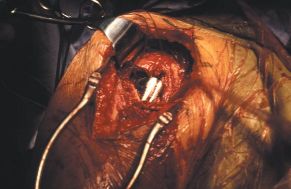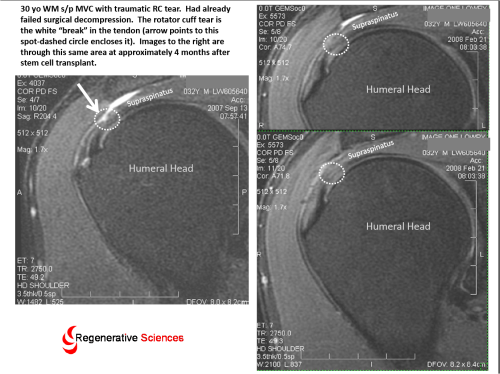The rotator cuff is compromised of 4 major muscles and tendons that act collectively to stabilize the shoulder joint.
The four muscles include the supraspinatus, infraspinatus, subscapularis and teres minor. Tendons are the fibrous portion of the muscle that anchors the muscle to bone. This fibrous anchor can be inflamed resulting in a tendinitis or can be chronically degenerative resulting in tendinosis. The one of 4 muscles can have a partial or full thickness tear.
At the Centeno-Schultz Clinic ultrasound is utilized to determine the source of pain. The pain may arise from a tear in one or more of the four rotator cuff muscles or inflammation or degenerative changes in the fibrous tendon anchor. Other explanations exist which will be discussed in another blog.
Rotator cuff tears can be treated with Regenexx SD whereby a patient uses their own mesencymal stem cells. Tendinosis can be treated with Regenexx SCP.
The Regenexx family of procedures represent the highest quality stem cell therapy with the largest number of stem cell treatment options in one clinic and which are ICMS certified.




















